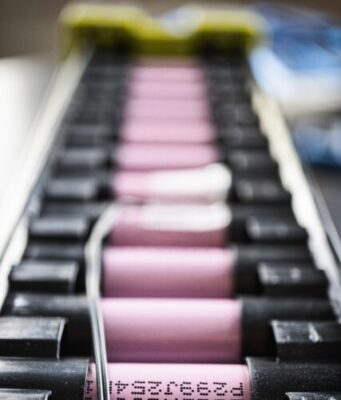Northwestern University researchers have developed a first-of-its-kind technique for creating entirely new classes of optical materials and devices that could lead to light bending and cloaking devices -- news to make the ears of Star Trek's Spock perk up.
Using...
A new self-healing fungi concrete, co-developed by researchers at Binghamton University, State University of New York, could help repair cracks in aging concrete permanently, and help save America's crumbling infrastructure.
Congrui Jin, assistant professor of mechanical engineering at Binghamton University,...
In an advance that could push cheap, ubiquitous solar power closer to reality, University of Michigan researchers have found a way to coax electrons to travel much further than was previously thought possible in the materials often used for...
Researchers program biomaterials with 'logic gates' that release therapeutics in response to environmental triggers
Drug treatments can save lives, but sometimes they also carry unintended costs. After all, the same therapeutics that target pathogens and tumors can also harm healthy...
Chemists at The Scripps Research Institute (TSRI) have developed a fascinating new theory for how life on Earth may have begun.
Their experiments, described today in the journal Nature Communications, demonstrate that key chemical reactions that support life today could...
his image of a squirrel was printed in color by controlling the thickness of a colorless ink deposited on a thin film.
Credit: American Chemical Society
From dot-matrix to 3-D, printing technology has come a long way in 40 years. But...
NUS PhD student Mr Liu Wei showing the two-dimensional graphene-like polymer (left), and a piece of carbon paper coated with the novel material (right).
Credit: National University of Singapore
Polymers, such as plastic and synthetic textiles, are very useful technological commodities...
Ketone (fluorenone) polymer can fix hydrogen via simple electrolytic hydrogenation in water at room temperature and release hydrogen when heated to 80 degrees C.
Credit: Waseda University
A Waseda University (Tokyo) research group has developed a polymer which can store hydrogen...
Stanford scientists have invented a device that produces clean-burning hydrogen from water 24 hours a day, seven days a week. Unlike conventional water splitters, the Stanford device uses a single low-cost catalyst to generate hydrogen bubbles on one electrode...
Splitting water into hydrogen provides a means of harvesting the hydrogen for fuel. This image depicts the water-splitting process in a light-sensitive electrode material (BiVO4), which UChicago and University of Wisconsin researchers investigated in an experimental and computational study.
Credit:...
Schematic of a new catalyst made of copper nanoparticles that converts carbon dioxide to multicarbon products (ethylene, ethanol, and propanol). At top left are transmission electron microscope images of the copper nanoparticles. The transformation of the nanoparticles from spheres...

















